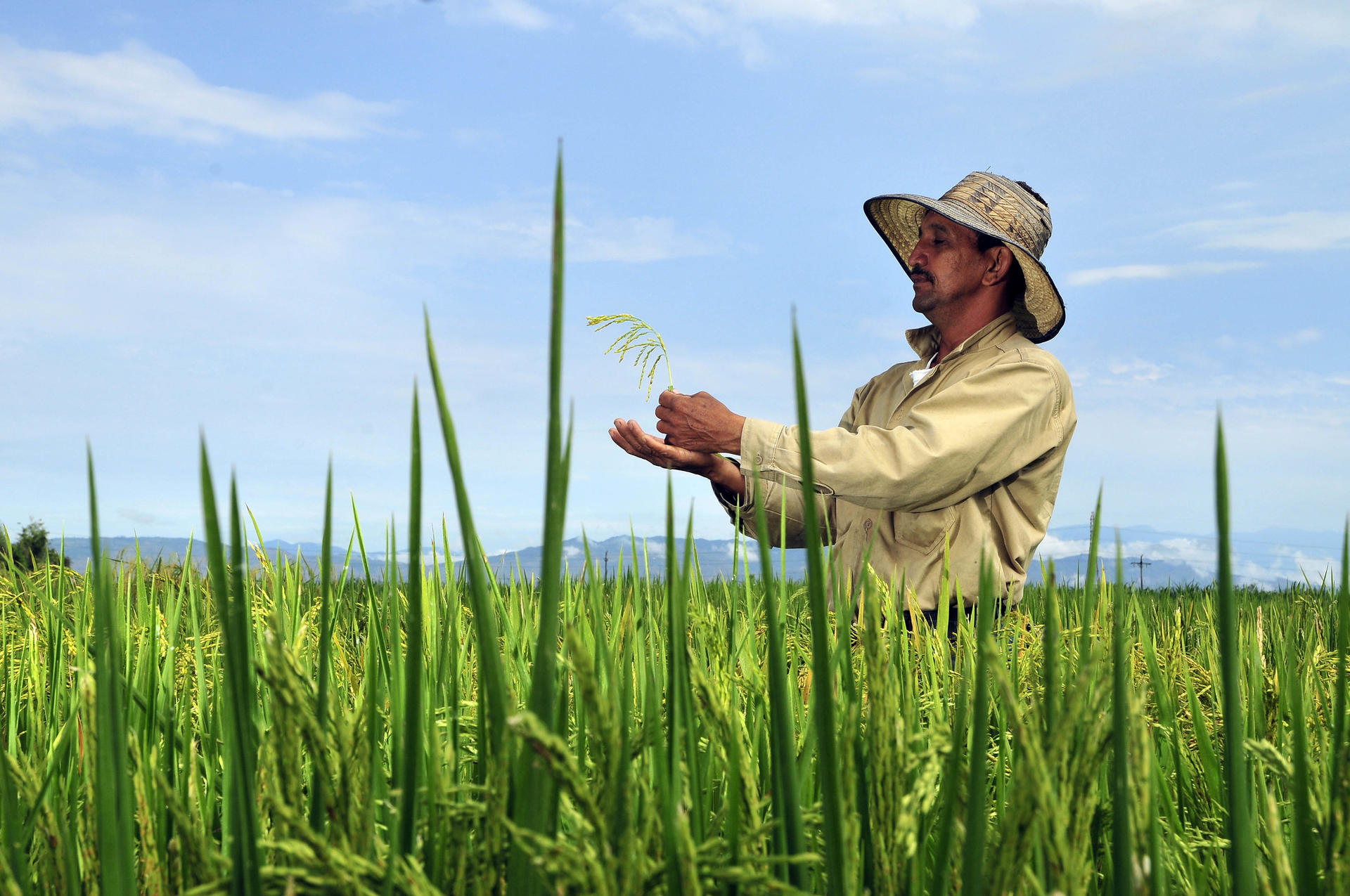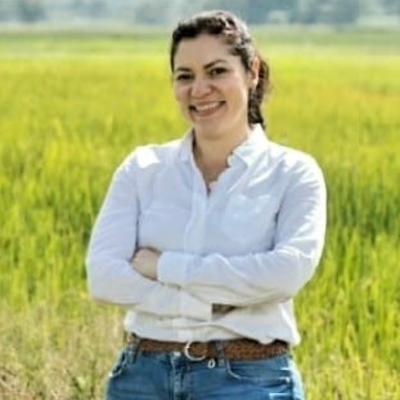Call for internships in low-emissions agriculture projects

About
Carbon Sequestration Fellowship, supported with funding from the Bezos Earth Fund, is a research training focused on measuring, modeling, and mitigating greenhouse gas emissions or carbon storage in agricultural systems relevant to developing countries (in the context of enhancing food security with sustainability).
The fellowship invites applications from Master or Ph.D. students for short-term (4-month) scientific internships of all nationalities. However, qualified women candidates and candidates from Latin America and African countries are encouraged to apply. The research will be conducted with the Alliance of Bioversity International and CIAT scientists in Palmira, Colombia, or Nairobi, Kenya.
The Alliance will provide funding through Carbon Sequestration Fellowship that aims to tackle the global climate emergency by developing new root ideas in tropical forage grass and rice with the deep rooting ability for enhanced carbon storage in tropical soils.
In the first rounds of Carbon Sequestration Fellowship, 10 Master or Ph.D. students will receive grants to further their research skills and strengthen international agriculture emission research networks.
Selected students will be sponsored in the amount of 10,000-12,000 USD for short-term (4 month) research stays to collaborate with projects associated with the project “Using genetic diversity to capture carbon through deep root systems in tropical soils”. The grants will be used to support living and research costs at the host institution. Host institution will provide mentorship and scientific training. Ideal arrangements are where students can participate in research teams, while pursuing work that contributes to their Master or PhD. Desk studies are not encouraged. Students should be helping to generate original data and developing their research skills.
Process and timing for advertising call and student selection and research

• February 14 to March 30, 2023: Carbon Sequestration Fellowship publishes the call for applications and circulates widely to potential students. Eligible students should submit applications up to March 30, 2023 (12pm Colombian Time).
• April 1-25, 2023: CIAT evaluates applications and short-listed applications will be will sent to project leaders for final interviews and selection.
• April 30, 2023: CIAT informs students and begin the contract process. Successful applicants are publicly announced.
• Between May-July the students will start the fellowship
• December 31, 2023: Students should have completed their fellowship

Plants pull CO2 from the atmosphere and store it in the leaves, stems, and roots, and some of the carbon travel to the soil through roots and is stored as soil organic carbon (SOC). A slight increase in SOC could slow the concentration of CO2 in the atmosphere and reduces global warming. The latest IPCC assessment indicated that CO2 removal (CDR) methods such as soil C sequestration could improve soil quality and food production capacity while avoiding global warming.
This multi-functional role of roots pulling C into the soil has been progressively recognized with decreasing CO2 concentration in the atmosphere. It is important to note that not all accumulated C is sequestered in soil. But increments of SOC stocks through deep rooting and appropriate management practices can contribute to effective CDR from the atmosphere and, at the same time, improve soil water retention, soil structure, plant health and nutrient supplies, erosion resilience, and crop and livestock productivity. However, key questions remain unanswered regarding the genetic diversity in deep rooting ability among the crop and forage cultivars and the extent to which improved deep rooting translates into more SOC storage in tropical soils. Furthermore, the soil-plant-microbial processes that mediate SOC storage in C3 photosynthetic crop (rice) and C4 photosynthetic grass (forage) based human intervened crop-livestock systems also need to be studied.
Therefore, tropical forage grass and rice genotypes developed or designed with deep rooting ability improve storage of particulate organic C (POC) and mineral-associated organic C (MAOC) in crop-livestock systems in the tropics while maintaining or increasing yields. This hypothesis will be evaluated using the existing and newly created genetically diverse germplasm/breeding/gene-edited rice lines (C3 photosynthetic pathway) and tropical grasses (C4 photosynthetic pathway).

Objective 1: Develop and evaluate through high-throughput phenotyping and field studies, deep rooted tropical forage grasses; and define the soil-root-microbe interactions contributing to improved SOC storage in tropical soils. (Jacobo Arango)
Objective 2: Understand the carbon capture-related traits in the rice crop and develop Rice breeding lines with a high capacity for carbon capture. (María Fernanda Álvarez)
Objective 3: Unravel the potential of deep rooting forage and crop components in crop-livestock systems to replenish soil organic carbon in human-intervened areas in tropical soils of Latin America and Africa. (Mayesse Da Silva)
Objective 4: Apply gene editing technology to rice for improving productivity and C storage through deep rooting ability and enhanced photosynthetic efficiency. (Paul Chavarriaga)
Objective 5: Develop strategies to disseminate new root ideotypes of forage grass and rice for use in tropical acid soil regions of tropical Africa and Latin America and estimate benefits of effective C removals from the atmosphere. (An Notenbaert)
Cross cutting Digital agriculture: It refers to the use of digital technologies, such as computer software, sensors, and artificial intelligence, to enhance and optimize various aspects of agriculture, including crop production, and management. The goal of digital agriculture is to increase efficiency, productivity, and sustainability while reducing costs and minimizing negative impacts on the environment. Digital agriculture can encompass a wide range of applications, including precision agriculture, remote sensing, smart irrigation, and digital extension services. The use of digital tools can help plant breeders and farmers make more informed decisions, monitor their crops more effectively, and improve their overall profitability. (Michael Selvaraj)

Applicants must complete the Carbon Sequestration Fellowship in two steps: 1- Fill out the online application form HERE and 2- Submit the following necessary documentation merged into a single PDF file to the email [email protected]. Applications must be in English, and applications in any other language will not be accepted.
• 1-page motivation letter (described below)
• 1-page academic curriculum vitae (CV / Resume) that includes your contact details
• Letter of support from your Master or PhD supervisor at your current host university
Deadline for expressions of interest: 30 March 2023 (12pm Colombian Time).
Motivation Letter
Your motivation letter should be no more than two pages and must include the following:
1. Your name, nationality and your Master or PhD country.
2. Objectives of your graduate research.
3. The specific research opportunity, select one objective and two subareas of interest to which you are applying.
4. Your qualifications to research greenhouse gas emissions and/or soil carbon storage in agricultural systems should be relevant to the research opportunity you are applying for.
5. A description of how scientific training received under the Carbon Sequestration Fellowship will improve your graduate research and contribute to your career.
Selection process
Successful applicants will demonstrate the relevance of the Master's or Ph.D. research for which they apply. Successful applicants will be matched with a project and notified by email by April 30, 2023.
Applicants will be selected based on three criteria:
• The overall level of research experience.
• Relevance of Master or Ph.D. thesis topic or other research experience to the Carbon Sequestration Fellowship objective.
• A clear description of how the Carbon Sequestration Fellowship experience would improve the student's scientific capability and career.
Eligibility
The fellowship is open to people from all over the world; however, emphasis will be placed on citizens of African and Latin American countries pursuing a master's or doctoral degree at the university.
Related Opportunities
The students may organize webinars, workshops, and other capacity-building activities. These opportunities will provide professional experience and serve as networking and communication platforms for the fellowship Program to share research and experiences. and their experiences with each other.
The Fellowship students are not expected to use their award for travel to the workshop.
Scientists Involved in low emissions development

María Fernanda Álvarez
Director, Crops for Nutrition and Health, and Program Leader, Rice Breeding and Genetics
Paul Chavarriaga
Gene Editing Platform LeaderMichael Gomez Selvaraj
Leader, Digital Agriculture PlatformCarbon Sequestration Fellowship terms of reference: click here and go to this document to download it.
